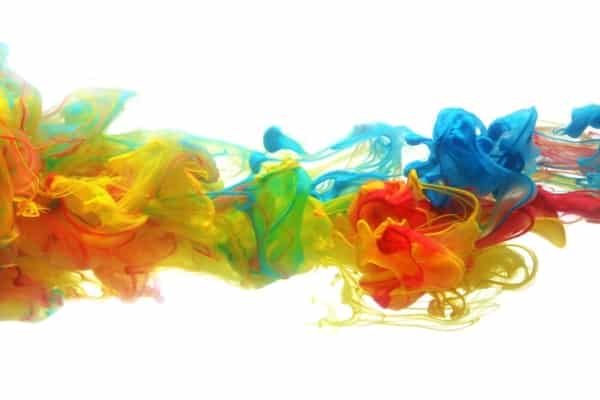How Colors Affect Mood and Which Ones to Choose to Create Peace and Tranquility

According to the American Psychological Association, stress is a big health issue in the U.S. As of 2007, nearly half of Americans suggested that their stress was increasing. Now, in the wake of the COVID-19 pandemic, it is feared that mental health issues will be running rampant, especially without enough resources to properly help people in need.
A bit of stress is normal in everyone’s life, and it can even be a good thing. But, excessive stress can lead to a variety of both mental and physical health issues. While there are plenty of ways to combat stress from exercising and eating right to meditation and mindfulness, did you know that something as simple as color can have an impact on the way you feel?
The psychology of color is the idea that the colors you see on a daily basis are deeply rooted in both your culture and life experiences. Therefore, certain colors can evoke specific emotions, thoughts, or energy levels. Color can influence the way you perform, the things you purchase, and even how you feel in specific rooms of your house.
So, how do colors affect your mood, and how can you use them to your advantage when you’re trying to create more peace in your life?
Why Do Colors Impact Your Mood?
It’s important to keep in mind that how people feel about color is subjective. Two people might see the same shade of blue and feel two different things. But, for the most part, people respond in similar ways depending on how “warm” or “cool” a color is. Warm colors tend to evoke comfort for most people, but vibrant warm colors can also cause anger and tension.
Cool colors, like hues of blue, are typically the colors associated with tranquility and calmness. But, certain shades can also lead to feelings of sadness or even depression.
Colors are so powerful because they connect to different parts of your mind, body, and spirit. They give off various levels of energy that you respond to in different ways. When you include the right colors in your life, not only can you achieve more peace, but you may find which color rays give you the most energy, so you can utilize those shades as much as possible.
What Are the Best Colors for Peace?
People respond differently to color shades, but the following are typically considered to be the most peaceful colors:
- Blue
- Green
- Pink
- White
- Violet
- Gray
- Yellow
Although these colors can all have a calming effect, they work in different ways. For example, yellow is often used in kitchens to promote energy and happiness, as well as togetherness. Warm colors like gray and violet, on the other hand, can help to create a calming environment. That’s why those shades are popular in doctor’s offices and hospitals, on top of a number of other techniques, in order to help calm anxious patients.
Calming colors can even be combined. Gray, for example, might sometimes be seen as a sad or depressing color. While it can evoke feelings of tranquility on its own, it is very effective when paired with other soothing colors like certain shades of blue.
Again, color is subjective because there are so many different shades and combinations to choose from. If you’re trying to create a more peaceful environment, however, start with some of the colors listed above.
Create a Calming Space With Color
One of the best ways to put peaceful colors into practice is by utilizing them in your own home. You should be mindful in setting the tone of your living space, and that includes treating yourself the way you want to be treated. If certain colors are speaking to you, or evoke a feeling of calm and tranquility, use them in your space.
Your living room, for example, might feel more soothing and serene if you choose a dark green color that imitates the feeling of a tranquil forest. You’ll love spending your evenings there, relaxing, journaling, meditating, or just unwinding from the stress of the day.
Your bedroom is, perhaps, the most important room to focus on when it comes to creating a peaceful environment. Creating the ideal sleep space includes everything from choosing calming scents to surround yourself and eliminating outside noise. But, the color(s) you choose for your bedroom can also have a big impact on how calm you feel.
Try to focus on colors that can be found in nature, like hues of green, and neutral browns. A soft, neutral green or gray can also help you to feel calm and ready to sleep. Neutral colors are better in the bedroom, instead of loud, “warm” colors like red and yellow.
Colors are everywhere, and they impact your daily life more than you probably realize. Now that you understand a bit more about the science behind colors and how they can impact your mood, try to bring more calming, tranquil colors into your life and see how they can reduce stress and soothe your mind, body, and spirit.






